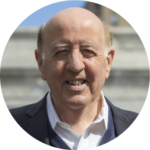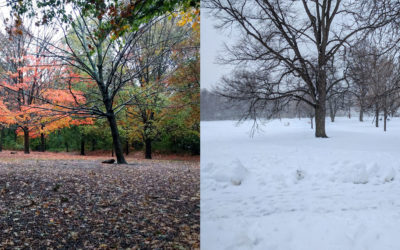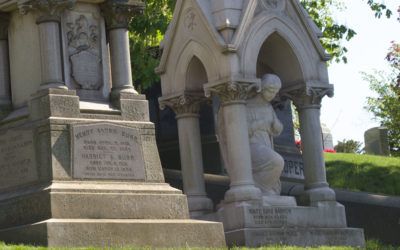—SMARTER—
How Getting Smarter Can Enrich Your Life
By Robert DiYanni, New York University
SMARTER—How Getting Smarter Can Enrich Your Life
By Robert DiYanni, New York University
Preface
Why and How to Get Smarter
Most of us, most of the time, believe that we are smart—smart enough to get on with our lives reasonably well. There is little reason to doubt that we are largely right about this. And yet we may also recognize that there is much we don’t know, and many things we don’t do well, if at all.
Being smart is not something given once and for all; smartness is not innate. You can learn to become smarter, not only more knowledgeable about things that interest you, but also a more capable and confident thinker. You can become smarter about making productive decisions.
Recent findings in brain plasticity confirm the brain’s ability to develop latent capacities lost through illness and injury. Having a growth mindset—a mind that believes it can get better at learning—is essential for developing your powers of thinking and communicating. Henry Ford once said, “if you think you can and if you think you can’t, you’re right.”
However smart you are already, what if you could become smarter? How might getting smarter improve your thinking, increase your confidence, and enhance your life in other ways?
I suggest that you will find it useful (and pleasurable) to get smarter in a few key ways—becoming a more confident thinker, a more critical reader, and a more accomplished writer and oral communicator. I believe that it will be worth your while to invest in improving these intertwined skills. Developing your capacity for productive thinking, critical reading, and effective writing and oral communicating will serve you in many ways.
How, you might ask?
Because getting smarter enriches our lives intellectually, emotionally, and socially. Becoming smarter improves our ability to relate to and work with others. Getting smarter helps us thrive. As a reader of SMARTER! You will become more skillful and more knowledgeable; in the process you will enhance your psychic well-being.
Becoming smarter keeps your mind sharp as you age. It provides an antidote to the accelerating deluge of disinformation. It will make you more discerning.
Becoming smarter improves our ability to think critically and creatively, skills that can enable good decisions in your personal and professional lives. Critical thinking aids judgment, clarifies values, and deepens understanding. It will make you wiser. An ability to think creatively, with imagination, will help you generate ideas and solve problems that don’t yield readily to critical thinking.
Creative thinking is a basic human capacity, one we possess in abundance when young, but allow to atrophy as we age. This decay of our imaginative capacity, however, is not inevitable; it does not have to happen.
OK, you might say about critical and creative thinking. But why critical reading? And why writing? Although we learn in many ways, from looking and listening to following instructions to learn all manner of things, careful reading remains relevant to our intellectual development. Reading critically through questioning texts and relating them to our experience deepens our understanding. It makes us smarter.
Writing well enables us to communicate effectively with ourselves and with others; writing well makes us more interesting to ourselves and to others. Broadening our knowledge and enriching our understanding help us flourish. Taken together, these benefits enable us to engage with confidence in a wide range of serious conversations about all manner of subjects.
For the opening chapter of Part One, I explain why it’s worth developing both your critical thinking and your creative thinking abilities. I explain why quality thinking matters to us today more than ever. In Chapter 2, “Four Ways of Thinking,” I explore the following thinking strategies: dialectical reasoning; combining and connecting; blending art and science; and embracing ambiguity. Each of these strategies can enrich and deepen your thinking.
Chapter 3, “How to Become a Creative Thinker,” explains how you can make creative thinking a regular part of your life, and how you can develop a flourishing imagination. We need imaginative thinking to generate fresh ways to solve increasingly wicked problems.
After a pair of interludes, “Critical and Creative Thinking in the Workplace” and “Eight Smart Habits for Listening and Speaking, Part Two moves from thinking to critical reading and effective writing. Chapter 4 “How to Gain More from Your Reading” illustrates ways to increase your understanding of what you read. “Reading Toward Thinking” (Chapter 5) stresses how reading is inextricably linked with thinking—and how you can benefit from that powerful connection. Chapter 6 offers advice about how to read great books that span languages and cultures across millennia—advice you can begin applying immediately.
I follow with three brief writing chapters that offer a systematic approach to improving your writing. Chapter 7, “Writing to Learn,” considers writing as a way to think and learn. Chapter 8 provides an overview of the process of writing. And chapter 9 explains how you can develop the habit of writing—regular writing for practical purposes.
Part Three shifts from skills to knowledge across academic disciplines and domains, with a focus on the humanities. In this part, I explore fundamental questions and concerns of philosophy and religion (chapters 10-11); history, literature, and languages (chapters 12-14); music and dance (chapter 15). A pair of interludes on languages and history and on music, language, and meaning are also included.
Throughout these discussions of the humanities, I take up the following questions: What approaches to knowledge does each discipline take? What questions are central to each? What makes each humanities discipline what it is and not something else?
Part Four examines key questions in the natural and social sciences before providing a basic overview of what mathematics is and does. In this part, I explore general concerns of the natural sciences (Chapter 16), and then specific topics in biology, chemistry, and physics (Chapter 17). After reviewing general questions and concerns in parallel considerations for the social sciences (Chapter 18), with a focus on anthropology, psychology, and political science (Chapter 19), I take up some basic math topics, including numbers (Chapter 20), before considering some approaches to geometry Chapter 21).
Interludes in Part Four explore scientific research and bias, the idea of the commons, behavioral economics, and interesting numbers. My goal throughout Part Four is to get you thinking productively, in a preliminary way, about the central interests and issues of science and math.
Each discipline, whether scientific or humanistic, follows methods that provide the grounds for its authority. Each discipline provides its own special way of gathering, presenting, and evaluating evidence for the truths it claims to present about the world and its workings. Each has its distinctive way of identifying, asking, and answering questions of importance and value.
My consideration of disciplinary knowledge is both eclectic and synthetic. I synthesize a range of sources, many of them recent books. Although I take a wide view of the disciplines included, I make no attempt to discuss every major topic within them. Nor do I try to go deeply into any single aspect of a particular discipline. I offer, instead, a taste of the disciplines included and an opportunity to get acquainted—or re-acquainted—with their fundamental facets and essential elements.
This book, thus, is not for experts, but rather for those with limited knowledge of the fields and topics included. For some readers (and for particular subjects and topics), it will serve as a primer; for others, it will extend what you know and offer an opportunity for synthesis, consolidation, even provocation.
I hope that you find in the following pages many pleasures and rewards of learning. Why not begin discovering those rewards and pleasures right away?
TABLE OF CONTENTS
SMARTER! How Getting Smarter Can Enrich Your Life
Preface
PART ONE Establishing Smart Skills—Thinking, Critical & Creative
Chapter One Why Thinking Matters
Chapter Two Four Ways of Thinking
Chapter Three How to Become a Creative Thinker
Interlude 1 Critical and Creative Thinking in the Workplace
PART TWO Cultivating Smart Skills—Reading Critically & Writing Well
Chapter Four How to Gain More from Your Reading
Chapter Five Reading Toward Thinking
Chapter Six How to Read Great Books
Interlude 2 Eight Smart Habits for Listening and Speaking
Chapter Seven Writing to Learn
Chapter Eight Mastering the Writing Process
Chapter Nine Developing the Habit of Writing
PART THREE Getting Smarter About the Humanities
Chapter Ten Getting Smarter About Philosophy
Chapter Eleven Getting Smarter About Religion
Chapter Twelve Getting Smarter About History
Interlude 3 Languages and History
Chapter Thirteen Getting Smarter About Languages
Chapter Fourteen Getting Smarter About Literature
Chapter Fifteen Getting Smarter About Music & Dance
Interlude 4 Music, Language, and Meaning
PART FOUR Getting Smarter About Sciences and Mathematics
Chapter Sixteen Getting Smarter About Natural Sciences
Chapter Seventeen Getting Smarter About Big Ideas in Natural Sciences—Biology/Chemistry/Physics
Interlude 5 Scientific Research and Bias
Chapter Eighteen Getting Smarter About Social Sciences
Chapter Nineteen Getting Smarter About Big Ideas in Social Sciences—Anthropology/Psychology/Political Science
Interlude 6 The Idea of the Commons
Interlude 7 Notes on Behavioral Economics
Chapter Twenty Getting Smarter About Math and Numbers
Interlude 8 Some Interesting Numbers
Chapter Twenty-One Getting Smarter About Geometries
References
Index
Current Writing Projects
My current writing projects are linked below: (1) a book on reading literature (Improvisations); (2) two books on getting smarter (fast and across the board); (3) a pair of memoirs about my teaching life (50 years+) and my life with music (even more years!). Also included is information about my biggest work-in-progress: an encyclopedic summa pedagogica, with the current title: Provocative Pairs—Learning with the World’s Masters (152 chapters—and counting—each chapter a dozen double-spaced pages, with most chapters devoted to a pair of great masters past and present).
For each of these works in the making, I have provided a table of contents and preface. A couple of them also include a sample chapter. An additional book I have in the works is Poems to Live By, for which I’ve included about a third of what I’ve written so far—also with a brief TOC and prefatory note.
Mastery—Learning with the World’s Best Masters
SMARTER—How Getting Smarter Can Enrich Your Life
Think for Your Life
How Critical and Creative Thinking Can Improve Your Life
Teach for Your Life
Stories of Teaching & Learning
Double Life: The Teaching Life & Living with Music
Poems to Live By
Essays: Reflections and Ruminations

Robert DiYanni
Author ⪢ | Professor ⪢ | Consultant ⪢
Robert DiYanni is a professor of humanities at New York University, having served as an instructional consultant at the NYU Center for the Advancement of Teaching and Center for Faculty Advancement. For these centers he conducted workshops and seminars on all aspects of pedagogy, consulted with faculty about teaching concerns, visited and observed classes, and provided a wide range of pedagogical consultative services. Professor DiYanni serves on the faculties of the School of Professional Studies and the Stern School of Business at NYU. He earned his undergraduate degree in English from Rutgers University, attended a Master of Arts in Teaching program at Johns Hopkins University, and received a Ph.D. in English Language and Literature from the City University of New York Graduate Center.
In addition to his work at NYU, Dr. DiYanni has taught at City University of New York, at Pace University, and as a Visiting Professor at Tsing Hua University in Taiwan and at Harvard University. As a high school teacher for four years and a college professor for more than four decades, Professor DiYanni has taught students from eighth grade through doctoral candidates. Most of his teaching, however, has been with college and university undergraduates. His numerous workshops, offered in more than twenty countries, have been attended by secondary school teachers and administrators, as well as by undergraduate college and university faculty and administrators.
Dr. DiYanni has written and edited numerous textbooks, among them, Literature: An Introduction; The Scribner Handbook for Writers (with Pat C. Hoy II); Arts and Culture: An Introduction to the Humanities, (with Janetta Rebold Benton), the basis for a series of lectures given at the Metropolitan Museum of Art; and Modern American Poets: Their Voices and Visions, which served as a companion text for the PBS television series Voices and Vision, which aired in the late 1980s.
You may also want to read these…
Comparing Poems
Comparison is one of the best ways of teaching anything; it is especially useful for reading and teaching…
The Widow of Ephesus
Once there was a certain married woman in the city of Ephesus, whose faithfulness to her husband…
Villanelle Variations
“I learn by going where I have to go,” writes Theodore Roethke in “The Waking.” “The art of losing…


